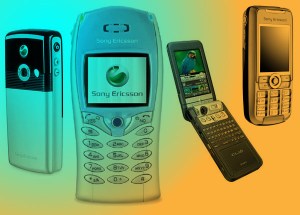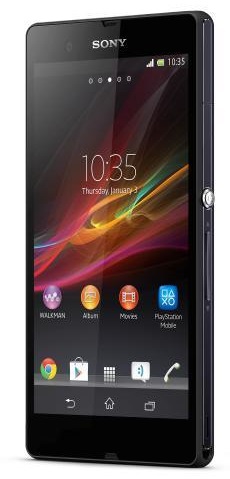
The Sony Ericsson T68i (my fave), the P800, and later the P900/P910 were amazing phones in their time. The Sony CLIÉ line outclassed everything in the PDA space for years. The foldable PEG-NZ/NX/UX lines? Radically inspiring. The Palm-killing SJ/TJ lines? Functional and affordable. The mobile landscape would look dramatically differently if Sony had the foresight to include a GSM mobile radio within some of these PDAs — or better yet, shared some of its DNA with the designers at Sony Ericsson.
The best Sony PDAs were very expensive but Sony products are supposed to be expensive. And they’re supposed to feel expensive. Sony lost that mentality over the years. Its mobile products were always contenders with competitive specs but they didn’t feel like anything special. The Sony Ericsson Xperia Play is all plastic. The Xperia Arc is simply bland.
 Quality
improved when Sony split ways with Ericsson. The Xperia S/P/U from 2012
feel great and have clear branding but they’re still uninspiring. Plus
it will take time for Sony to improve the damage down to its image from
years of boring SE phones.
Quality
improved when Sony split ways with Ericsson. The Xperia S/P/U from 2012
feel great and have clear branding but they’re still uninspiring. Plus
it will take time for Sony to improve the damage down to its image from
years of boring SE phones.Sony Ericsson was late to the smartphone game. It was too closely focused on the feature phone/camera phone market. SE’s first Android smartphones hit the market with older hardware and often received updates late. Android fanboys quickly figured out to stay away from SE phones.
SE, unable to compete head-to-head, turned to gimmicks in a desperate attempt to move some units. The Xperia X10 mini was a small, but an ultimately wonky take on Android phones. The Sony Xperia Play, with its slide-down gaming pad, is perhaps the most unconventional Android phone to date to gain any traction, but again, SE gave it little support once it hit. In November 2011 Sony announced that all its 2011 phones (including the Play) would eventually receive an update to Android 4.0. That didn’t happen. Sony eventually pulled the post and the support. (Here’s the dead Sony link and a mirror of the original content)
It wasn’t just Sony Ericsson products that failed. Sony’s own tablets were a joke, too.
It was early 2011, the iPad wasn’t even a year old and the market was just coming off the high of netbooks. Sony just introduced its first tablets but was still betting big on the underpowered ultraportables. At the time Sony had several lines of expensive Asus EEE competitors. But the Sony VAIO P ultimately floundered — you remember, the netbook for the JNCO crowd. Tablets were set to be the next big thing but Sony wasn’t ready to commit. Its first tablets were marketed not as standalone units, but as a second screen to Sony’s BRAVIA HDTVs. They flopped.
Then something happened. Sony had a changing of the guard. The Sony of 2013 is dramatically different from the Sony of 2011. There is now just “One Sony”.
In 2012 Kazuo Hirai replaced Sir Howard Stringer as Sony’s president and CEO. As the former head of the PlayStation division, Hirai knows the consumer market. He quickly moved to reposition the massive Sony machine through a plan called “One Sony”. Stringer built an empire during his tenure, but it was clear even during Hirai’s early days that he was aiming to refocus Sony into a more focused company. Hirai’s plan calls for Sony to reduce losses from its struggling TV business while focusing on imaging, gaming and mobile products. Just one year later, it seems to be working.
A few weeks ago, Sony introduced the Xperia Z and ZL at CES 2013. These device not only look great, but they signal a huge change in strategy: Sony is moving away from budget devices. In a bid to better compete with Apple and Samsung, Sony is only going to make high-end smartphones. This seems to be the message with tablets, too. The company just unveiled the aptly named Xperia Tablet Z and it’s just as stunning as its smartphone counterparts with high-end specs and a case thinner than the iPad mini. In short Sony is attempting to be the Sony of old.

The Xperia Z and Xperia Tablet Z have the same lines and striking designs. They’re both impossibly thin and in classic Sony style, nearly void of any branding. Their designs are not loud or over the top. The designs are not gimmicky, yet, strangely, that’s their gimmick. These mobile devices are purely Sony. I want them in my life.
Sony still has a lot of work to do. Simply building a great product does not guarantee success in the marketplace. Along with smarter marketing, Sony needs to drop the silly Xperia branding. Just like it’s doing with its product lines, the branding needs to be simplified, basically reduced to a minimum viable name. This is true across Sony’s vast product library. This Sony speaker dock is one of the best I’ve tried, but I can never remember the name (RDP-XA700IP).
Under its new CEO and President, Sony has a chance to return to glory. It has a chance to be a must-have brand again. There was a time not long ago that Sony had legions of fanboys and released products that inspired. People simply *had* to own Sony products. But Sony sold out by throwing multiple products against the wall, just hoping something would stick. The Xperia Z and Xperia Tablet Z might not outsell the Galaxy S III or iPad, but for the first time in years, Sony has a mobile product family with a soul.
No comments:
Post a Comment